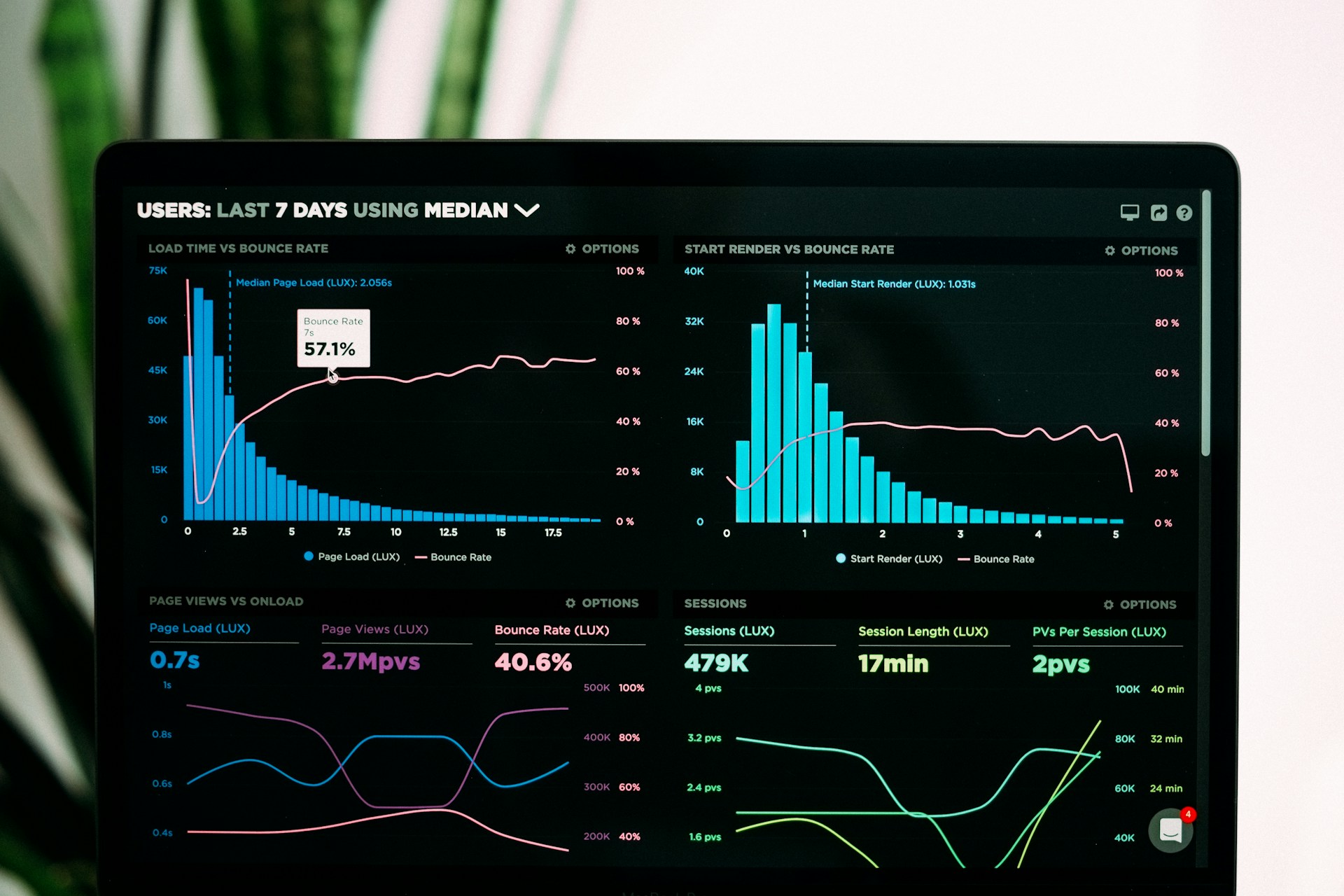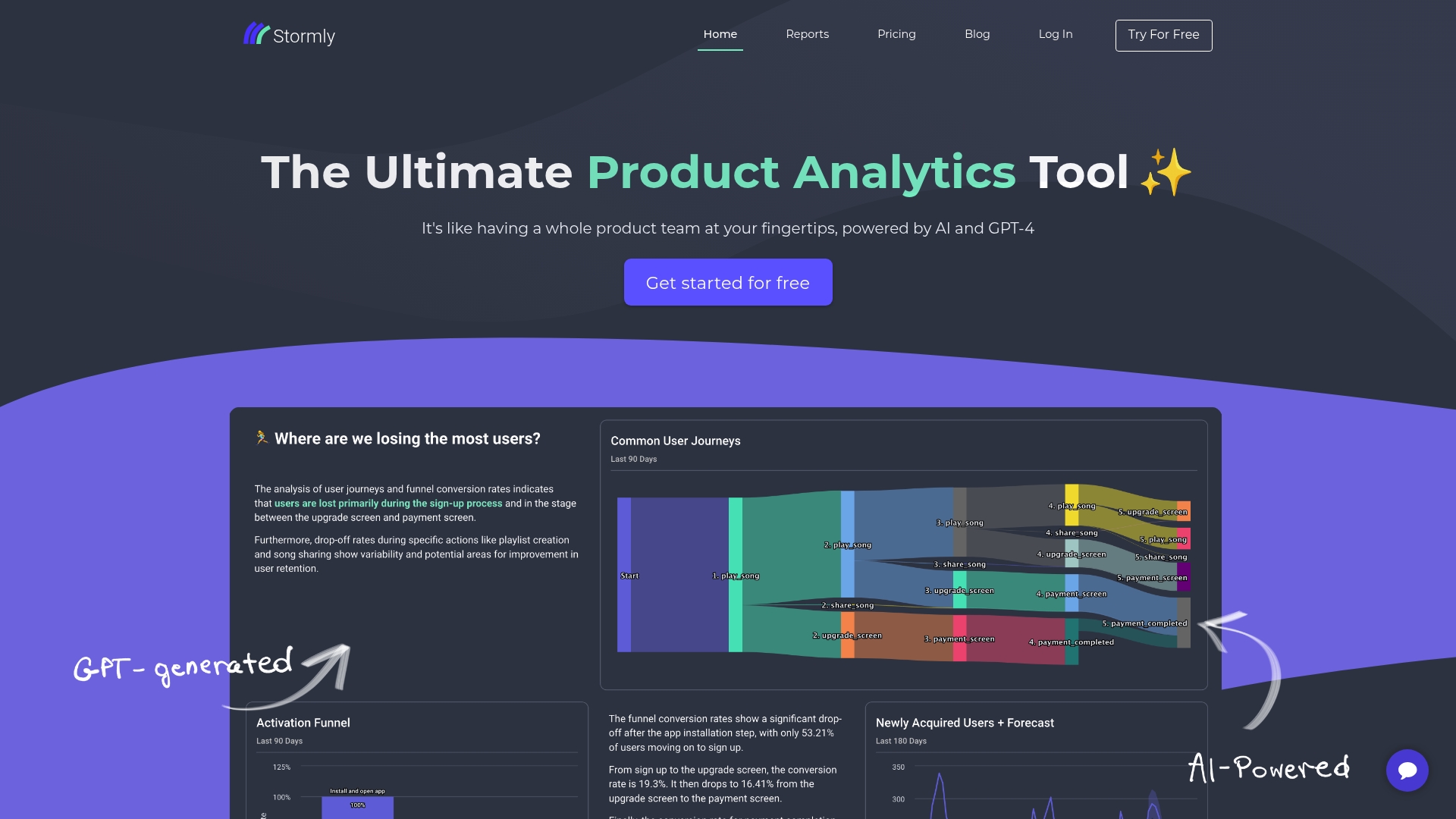What Are Data Insights? Unlock Hidden Business Value

Data insights are the secret weapon behind thriving businesses today. They hold the power to transform raw data into valuable interpretations that can drive success. In fact, effective insights can enhance operational performance and improve decision quality, ultimately creating sustainable competitive advantages. But here’s the twist: many companies still struggle to harness these insights effectively. The real game-changer isn’t just having data; it’s mastering the art of transforming that data into actionable intelligence that can drive innovation and growth.
Exploring Data Insights Fundamentals
Data insights represent the meaningful interpretations extracted from raw data that drive intelligent business decisions. Understanding what data insights are and how they function forms the foundation of modern data-driven strategies across industries. These interpretations transform seemingly disconnected information into actionable knowledge that organizations can leverage for competitive advantage.
Defining Data Insights
At its core, data insight refers to the deep understanding gained when analyzing information to identify patterns, trends, and relationships that might otherwise remain hidden. Data insights meaning extends beyond simple observations to include the valuable conclusions derived from thorough analysis. Unlike raw data, which merely presents facts, insights from data provide context and meaning that inform strategic decision-making.
The distinction between data and insight is crucial. Data represents the collected information—numbers, text, images, or measurements—while insights represent the valuable understanding extracted through analysis. For instance, knowing that website traffic increased by 30% is data, but understanding this happened because a specific marketing campaign resonated with a particular demographic segment represents an insight.
Organizations increasingly recognize that the path from data to insights requires both technological capabilities and analytical expertise. The most valuable insights from data analytics typically answer specific business questions or solve particular problems rather than simply reporting what happened.
The Value Chain: From Data to Insights
The transformation from raw information to actionable insights follows a distinct progression. This journey begins with collecting relevant data points and culminates in discovering insights that drive business decisions. The data insights value chain typically includes:
-
Data Collection: Gathering relevant information from various sources
-
Data Processing: Cleaning, organizing, and preparing information for analysis
-
Data Analysis: Examining the processed information to identify patterns
-
Insight Generation: Interpreting analysis results to produce meaningful conclusions

This progression demonstrates why insights and data must work together in a symbiotic relationship. Without quality data, insights lack foundation; without proper analysis, data remains underutilized.
Data insights examples abound across industries. Retailers analyze purchase patterns to optimize inventory. Healthcare providers examine patient outcomes to improve treatment protocols. Financial institutions assess transaction data to detect fraud patterns. Each example shows how organizations transform information into actionable intelligence.
Characteristics of Valuable Data Insights
Not all findings qualify as meaningful insights. Truly valuable data insights share specific characteristics that differentiate them from ordinary observations. Effective insights from data are:
Relevant: They directly address business questions or objectives rather than presenting interesting but unactionable information. Relevance ensures that the insight can be applied to specific business challenges.
Actionable: Quality insights suggest clear paths forward. They don’t merely identify what happened but provide direction on what actions to take based on the findings. The transition from data to insight must ultimately lead to decisions.
Contextual: They incorporate broader understanding beyond isolated data points. Insights into data consider the environment, timing, and circumstances surrounding the information to provide appropriate context.
Timely: The most valuable insights arrive when decisions need to be made. Data information insight delivered too late loses its strategic value, no matter how accurate.
The process of deriving insights from data has evolved significantly with the advance of analytics technologies. Modern approaches to data insights and analytics incorporate advanced techniques including artificial intelligence, machine learning, and predictive modeling to enhance the discovery process and generate deeper understanding from increasingly complex datasets.
Key Takeaways
| | | | | | | Takeaway | Explanation | | Insights Drive Decision-Making | Data insights transform raw data into meaningful interpretations that inform and guide strategic decisions, driving competitive advantages for organizations. | | Value Chain: Data to Insights | The process of transforming data into insights involves collection, processing, analysis, and interpretation, highlighting the importance of both quality data and thorough analysis. | | Characteristics of Valuable Insights | Effective insights are relevant, actionable, contextual, and timely, ensuring they directly address business challenges and inform decision-making in a meaningful way. | | Integration into Organizational Culture | A data-driven culture values evidence-based decision-making and promotes data literacy, enabling broader access to and application of insights across the organization. | | Measuring Impact of Insights | Organizations must implement measurement frameworks to track key performance indicators, connecting insights to tangible business outcomes such as revenue growth and customer satisfaction. |
Methods to Collect and Analyze Data
Effective data insights begin with robust collection and analysis methodologies. Organizations must implement strategic approaches to gather relevant information and extract meaningful insights from data. These methods form the foundation for transforming raw information into actionable intelligence that drives decision-making.
Data Collection Strategies
Data collection serves as the critical first step in the insights generation process. The quality and comprehensiveness of collected data directly influence the value of resulting insights. According to research on data collection methodology, effective research relies on strong data collection methods chosen based on specific research needs, often combining different approaches for well-rounded results.
Quantitative data collection methods focus on numerical information that can be measured and analyzed statistically. These include:
-
Surveys and Questionnaires: Structured instruments that gather standardized responses from large populations
-
Sensors and IoT Devices: Automated collection of measurements from physical environments
-
Transaction Records: Systematic capture of business interactions and exchanges
-
Web Analytics: Tracking of online user behaviors and interactions
Qualitative data collection approaches capture non-numerical information that provides context and depth. Common qualitative methods include:
Interviews: One-on-one or group conversations that explore subjects in depth. These provide rich, detailed insights that might not emerge through structured quantitative methods.
Observational Studies: Direct monitoring of behaviors or processes in natural settings, offering insights into real-world applications and challenges.
Focus Groups: Facilitated discussions with representative participants to gather diverse perspectives on specific topics or questions.
Proactive data collection has become increasingly important for generating valuable insights. Rather than simply working with available data, organizations now design data collection methodologies that ensure diversity, relevance, and quality from the outset. This approach helps mitigate bias and improves the reliability of resulting insights.
Data Analysis Frameworks
Once data is collected, organizations employ various analytical frameworks to transform raw information into insights. These frameworks provide structured approaches to examining data and identifying meaningful patterns.
Descriptive analytics examines historical data to understand what happened in the past. This approach forms the foundation of data insight generation by establishing baseline metrics and identifying trends. Descriptive techniques summarize large datasets into manageable information, providing the context necessary for deeper analysis.
Diagnostic analytics builds upon descriptive findings by investigating why certain patterns or anomalies occurred. This approach examines relationships between variables and identifies potential causal factors. By understanding the reasons behind observed phenomena, organizations can develop more effective responses and strategies.
Predictive analytics uses historical data to forecast future outcomes and trends. These techniques leverage statistical modeling and machine learning to identify patterns that might continue or evolve. Predictive insights enable organizations to anticipate changes and prepare appropriate responses.
Prescriptive analytics represents the most advanced form of data analysis, recommending specific actions based on predictive findings. These approaches use optimization techniques and simulation to identify optimal courses of action given particular conditions and constraints.

Tools and Technologies for Insight Generation
Modern data and insight generation relies on sophisticated technological tools that enhance collection, processing, and analysis capabilities. The technology landscape continues to evolve, offering increasingly powerful options for extracting value from data.
Data visualization tools transform complex information into accessible visual formats that highlight patterns and relationships. These tools make insights from data more understandable and actionable for decision-makers across an organization. Interactive dashboards provide customizable views that support exploration and discovery.
Business intelligence platforms integrate data from multiple sources and provide analytical capabilities that support insight generation. These platforms offer features for reporting, analysis, and monitoring that help organizations maintain awareness of key metrics and identify emerging trends or issues.
Advanced analytics solutions incorporate artificial intelligence and machine learning to discover insights that might elude traditional analysis. These tools can identify subtle patterns, predict future outcomes, and recommend optimal actions based on complex datasets. They enhance the organization’s ability to derive meaningful insights from increasingly large and complex information sources.
The evolution from simple data collection to sophisticated insight generation reflects the growing importance of data-driven decision-making across industries. Organizations that implement effective methods to collect and analyze data position themselves to discover valuable insights that drive competitive advantage and operational excellence.
Leveraging Data Insights Strategically
Transforming data insights into strategic advantage requires deliberate approaches that connect analytical findings to organizational objectives. When properly leveraged, data insights drive innovation, improve decision quality, and create sustainable competitive advantages. This strategic application of insights represents the culmination of the data-to-insight value chain.
Integrating Insights into Decision-Making
The strategic value of data insights emerges when they become embedded in an organization’s decision-making processes. This integration transforms insights from interesting observations into drivers of action and change. Organizations that successfully leverage insights from data consistently outperform competitors by making more informed choices.
Effective integration requires establishing clear connections between insights and specific business objectives. Decision-makers must understand how insights relate to operational challenges, market opportunities, or customer needs. This contextual understanding enables the translation of analytical findings into practical applications.
According to research on artificial intelligence and strategic decision-making, AI tools can significantly enhance the strategic decision process by improving three key cognitive functions: search (identifying options), representation (framing problems), and aggregation (combining perspectives). This technological enhancement accelerates the insight-to-strategy pipeline.
Organizations must also consider timing in their strategic application of insights. Some findings require immediate action, while others inform longer-term planning. Distinguishing between urgent and important insights helps prioritize responses and allocate resources effectively. This temporal awareness ensures that insights drive action at the appropriate time.
Building a Data-Driven Culture
Leveraging data insights strategically requires more than analytical capabilities—it demands a supportive organizational culture. Data-driven cultures value evidence-based decision-making and encourage the application of insights across all levels of operation. These cultures develop specific characteristics that enhance insight utilization.
A fundamental aspect of data-driven culture is accessibility. Insights from data analytics deliver maximum value when they reach all relevant stakeholders, not just specialized analysts or executives. Organizations that democratize access to insights enable broader application and generate more substantial returns on their data investments.
Data literacy represents another crucial cultural element. When team members understand basic analytical concepts and data interpretation principles, they can better apply insights to their specific responsibilities. Organizations increasingly invest in training programs that enhance data literacy across departments and functions.
Leadership commitment provides the foundation for data-driven culture. When executives consistently use and reference data insights in their decision-making, they model the behaviors they wish to see throughout the organization. This leadership example encourages broader adoption of insight-driven approaches.
Transforming Insights into Innovation
One of the most powerful strategic applications of data insights lies in driving innovation. Organizations that effectively leverage insights and data can identify unmet needs, reimagine existing products or services, and create entirely new offerings that deliver distinctive value.
Customer-centered innovation relies heavily on insights from data analysis. By examining customer behaviors, preferences, and pain points, organizations develop deeper understanding of market needs. These insights guide product development, service enhancements, and customer experience improvements that directly address identified opportunities.
Process innovation similarly benefits from strategic insight application. Operational data analysis reveals inefficiencies, bottlenecks, or quality issues that might otherwise remain hidden. Organizations use these insights to streamline workflows, reallocate resources, and implement targeted improvements that enhance productivity and effectiveness.
Business model innovation represents the most transformative application of data insights. By analyzing market trends, competitive dynamics, and internal capabilities, organizations identify opportunities to fundamentally reimagine how they create and deliver value. Data-driven business model innovation often results in disruptive market changes that establish long-term competitive advantages.
The strategic leverage of data insights ultimately determines whether organizations extract full value from their data investments. Those that successfully connect insights to action transform analytical findings into tangible results—improved performance, enhanced customer experiences, and sustained competitive advantage. This strategic application distinguishes organizations that merely collect data from those that truly derive value from their information assets.
Practical Applications for Business Success
Data insights drive tangible business outcomes when applied thoughtfully to specific operational challenges and market opportunities. Across industries, organizations implement insights from data in practical ways that enhance performance, reduce costs, and create competitive advantages. These real-world applications demonstrate how data translates into business value.
Customer-Focused Applications
Understanding customer behavior represents one of the most valuable applications of data insights. Organizations analyze purchasing patterns, engagement metrics, and feedback to develop deeper customer understanding. These insights enable personalized experiences that strengthen relationships and increase customer lifetime value.
Segmentation strategies benefit significantly from data-driven approaches. By identifying distinct customer groups based on behaviors, preferences, and needs, organizations can tailor their offerings to specific segments. This targeted approach improves marketing effectiveness and product-market fit across diverse customer populations.
Customer journey optimization leverages insights to remove friction points and enhance satisfaction. Organizations track interactions across touchpoints to identify opportunities for improvement. As research on applied business research notes, these applications help businesses maintain competitive advantages while simultaneously addressing real-world problems that benefit broader communities.
Predictive customer analytics anticipates future behaviors and preferences. By analyzing historical data, organizations forecast purchasing patterns, potential churn risks, and emerging needs. These forward-looking insights enable proactive strategies that preserve customer relationships and capitalize on emerging opportunities.
Operational Excellence Applications
Insights from data analytics significantly enhance operational performance across business functions. Process optimization represents a primary application area, with organizations using data to identify bottlenecks, reduce waste, and improve efficiency. These improvements directly impact financial performance through cost reduction and productivity enhancement.
Supply chain management benefits from data-driven insights that improve forecasting accuracy, inventory optimization, and logistics planning. Organizations analyze historical patterns, market trends, and operational metrics to develop more resilient and responsive supply networks. These applications have become increasingly valuable amid global disruptions and changing market dynamics.
Resource allocation decisions gain precision through data insights. By understanding the relative performance and potential of different business units, products, or initiatives, organizations optimize their resource investments. This targeted approach ensures maximum returns from limited organizational resources.
Quality assurance processes leverage data insights to identify potential issues before they impact customers. Predictive maintenance applications, for example, analyze equipment performance data to anticipate failures and schedule preventive interventions. These applications reduce downtime, extend asset lifecycles, and ensure consistent product quality.
Strategic Decision Support
Beyond operational improvements, data insights provide crucial support for strategic decisions that shape an organization’s future direction. Market analysis applications combine internal performance data with external market intelligence to identify growth opportunities and potential threats. These insights guide strategic planning processes and investment decisions.
Competitive intelligence applications monitor competitor activities, market positioning, and performance metrics. Organizations use these insights to differentiate their offerings, address competitive gaps, and capitalize on market weaknesses. This awareness enhances strategic positioning and responsiveness to competitive moves.
Mergers and acquisitions benefit from data-driven valuation and integration planning. Organizations analyze financial performance, operational synergies, and cultural compatibility to evaluate potential targets. Post-acquisition, data insights guide integration efforts to realize expected synergies and manage transition risks.
Risk management applications leverage data to identify potential threats and develop mitigation strategies. Organizations analyze internal operations, market trends, and external factors to anticipate challenges before they materialize. This proactive approach reduces vulnerability and enhances organizational resilience.
Measuring Business Impact
The ultimate test of data insights lies in their measurable business impact. Organizations that successfully apply insights typically implement robust measurement frameworks that track key performance indicators before and after implementation. This disciplined approach quantifies the value created through data-driven decisions.
Revenue growth often serves as a primary impact measure, with organizations tracking increases in sales volume, customer acquisition, cross-selling success, or market share gains. These metrics directly link insights to top-line performance improvements that drive organizational growth.
Cost reduction represents another crucial impact area, with organizations measuring efficiency improvements, waste reduction, or resource optimization benefits. These bottom-line impacts enhance profitability and competitive positioning through improved operational performance.
Customer satisfaction metrics capture the experiential benefits of data-driven approaches. Organizations track Net Promoter Scores, customer retention rates, and satisfaction metrics to evaluate how insights enhance the customer experience. These indicators predict future loyalty and advocacy that sustain long-term business success.
The practical application of data insights to business challenges transforms analytics from an interesting capability into a powerful driver of organizational performance. Organizations that systematically implement insights across customer relationships, operations, and strategic decisions generate measurable advantages that contribute to sustainable business success.
Frequently Asked Questions
What are data insights?
Data insights are interpretations derived from raw data that help organizations understand patterns, trends, and relationships, ultimately driving informed business decisions and strategies.
Why are data insights important for businesses?
Data insights are crucial because they transform raw data into actionable intelligence, improving decision quality, enhancing operational performance, and creating sustainable competitive advantages for organizations.
How do organizations generate valuable data insights?
Organizations generate valuable data insights by following a structured process that includes data collection, processing, analysis, and interpretation, ensuring that insights are relevant, actionable, contextual, and timely.
What tools are used for data analysis and insight generation?
Common tools for data analysis and insight generation include data visualization software, business intelligence platforms, and advanced analytics solutions that utilize artificial intelligence and machine learning to uncover meaningful patterns from large datasets.
Unlock the Power of Data Insights with Stormly
Are you struggling to transform raw data into valuable insights that inform your business decisions? You’re not alone. Many businesses face the challenge of deciphering their data amidst complexity and noise. The article outlines how organizations often find themselves buried in disconnected information, yet fail to extract actionable intelligence that drives competitive advantage. But what if there was a way to take the guesswork out of data analysis?

Introducing Stormly! Our AI-powered product analytics tool streamlines the process, delivering complex data insights quickly and easily—no manual experimentation required. Embrace the transformative potential of data insights; empower your decision-making with relevant, actionable, and timely interpretations that directly contribute to operational excellence.
Ready to harness your data? Discover how Stormly can elevate your understanding of customer behaviors and operational performance. Don’t let valuable insights slip away—visit Stormly today and start unlocking hidden business value. The future of data-driven decisions is just a click away!

